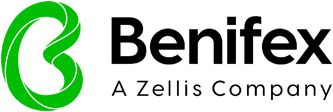Beyond benefits: How Danone built a personalized employee experience to support wellbeing
25.07.25
Evelyn Naulls, Head of Benefits UK & Ireland, Danone
At Danone, we believe that wellbeing should sit at the heart of the employee experience. But like many organizations, we found ourselves feeling a disconnect between what we offered, and what employees were actually experiencing. Although we had a strong suite of benefits, engagement was low. The platform was largely used once a year for enrollment and then forgotten about by employees. We knew we needed a purpose-built platform that could bring our wellbeing and benefits strategy to life.
Working with Benifex, we created a dynamic, personalized home for wellbeing — a space where employees could explore, understand, and use their benefits throughout the year, not just during a once-a-year window. We wanted employees to actually feel the value of what we provide.
That challenge isn’t unique. At Danone, we decided to lead from the front, building something that reflected the diversity of our workforce and delivered real outcomes, both for individuals and our business.
We started by structuring our approach around four core wellbeing pillars that guide how we present content on our platform: Mental, Physical, Nutritional, and Financial. These pillars also help employees find what’s most relevant to them. For example, financial wellbeing is something we hadn’t fully addressed before, but when we mapped our resources, we realized there was a gap. Adding financial wellbeing as a fourth pillar was key to providing a truly holistic experience.
We also wanted to reduce the cost and cultural toll of poor wellbeing. In the UK, the average cost of poor mental health at work is £1,652 per employee per year. That should be a wakeup call for any organizations thinking about wellbeing. By centralizing and promoting the right support, we’re aiming to be preventative, not reactive. And that’s already shaping how we approach private medical insurance claims, income protection trends, and broader health outcomes.
One of the biggest shifts has been in how we think about ownership. Previously, wellbeing was fragmented across different teams, with overlapping tools and little alignment. Today, we have a centralized HR lead working in close partnership with the benefits team. That clarity has helped us streamline offerings, remove duplication, and focus on what really matters.
Our benefits platform has become a living part of our culture. It’s visually intuitive, accessible to every employee — from factory floors to field staff to hybrid workers — and it’s dynamic. With the help of Benifex, we’ve built a content calendar that keeps the experience fresh for employees. Campaigns roll out throughout the year, spotlighting key benefits and wellbeing resources. Automation also handles the admin, giving our lean team space to focus on strategy, innovation, and keeping employees engaged.
Personally, having the right technology in place has been transformative. I’ve been able to step out of reactive work and into a more strategic role. Right now, I’m leading a major new project on preventative health — using real-time analytics from our benefits platform to explore how we can reduce long-term claims and improve employee outcomes. Without the structure and automation this platform provides, that kind of work wouldn’t be possible.
But the real proof is in the feedback. Employees are engaging. They’re returning to the platform. They’re making more informed choices — not because they were told to, but because the experience makes it easy and worthwhile.
We didn’t just digitize our benefits — we redefined them. And in doing so, we’ve closed a critical gap between intention and experience.
Read all expert takeaways from the Benifex Forum here.
